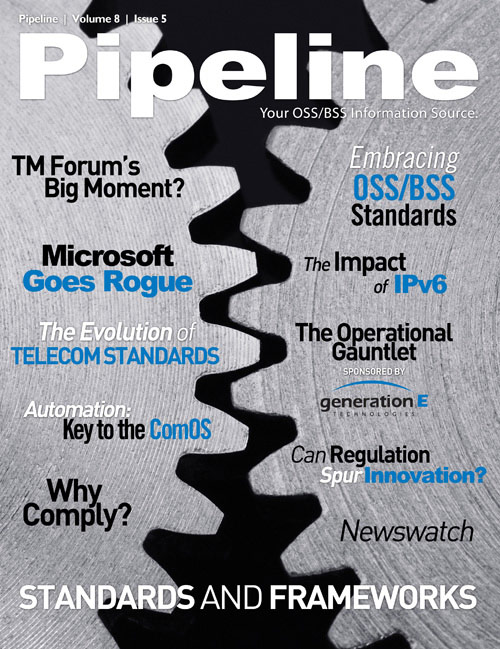What makes software standardization so challenging, ironically, is that one of software’s strengths is its flexibility. Software allows a talented developer, or development team, to create just about anything it can conceive of with an infinite number of variables for how to achieve the end goal. As a result, the ends — the powerful functionality brought to bear — have often justified the means, like a highly functional software solution that doesn’t manage data, present APIs, or exhibit an architecture similar to anything else with which it might someday need to interoperate.
Interestingly, software industries have often rewarded, rather than punished, suppliers for non-standardized approaches. But large enterprises — especially CSPs — have experienced great pain as a result. As their IT infrastructures have evolved, they’ve suffered many failed programs, and billions in excess expense, as they’ve tried to reconcile disparate architectures, interfaces, and data models in order to create integrated, enterprise-wide IT environments that enable real end-to-end process automation.
In the wake of these expensive pains, standards like TM Forum’s Frameworx and CMMI have gained momentum in terms of suppliers participating in their development and adoption. But many communications IT executives continue to complain about suppliers not driving more widespread adoption of available standards.
Standards like TM Forum’s Business Process Framework (eTOM) provide, among other things, structures for defining processes and functionality at a granular level, which makes it far easier for end users to select products, define and automate end-to-end processes, and merge application domains. TM Forum’s Information Framework (SID) offers a basis for data and information modeling, which pays dividends in everything from integration and data migration to reporting and real-time analytics. CMMI speaks more to development and implementation methodologies, which are critical for product quality, repeatability, and predictable solution delivery. Ultimately, these standards have the power to free CSPs from the high cost of customization and lack of business agility.
What Software Standards Mean for Business
Taken together, a software supplier’s ability to embrace and conform to these kinds of standards is a reasonable measure of that organization’s product maturity and quality, its delivery capabilities, and its ability to embrace, overcome, and simplify the extreme complexity inherent in the melding of software and communications business processes. It also sets the stage for CSPs to bring more predictable and flexible offerings to large end users in industry verticals.
The concept for CSPs is similar to that of bringing a line of automobiles to market. All the heavy manufactured parts that require expensive dies and forged steel — like the chassis, drivetrain, suspension, and engine — are standardized with just a few variables. The same approach is underway for the core architecture, functionality, processes, data models, and implementation methodology in the communications industry. The long history of automobile manufacturing, the collective wisdom of years in perfecting the assembly line, combined with the competitive dictates of the market, have all contributed to the highest level of standardization. In the communications industry, and specifically for BSS/OSS, that confluence of events is now at hand.
Solutions that comply with standards will be functionally well defined, architecturally sound, integration friendly, and more repeatable and predictable through their entire lifecycle — from implementation to retirement. This can free CSPs to engage end users on business issues so the solutions they extend can be tailored and personalized. In addition, CSPs can help their major customers leverage their networks more readily with powerful business capabilities including automated supply chains, secure, global, financial transaction capabilities, and the sophisticated, real-time collaboration needed among the design, engineering, product management, and manufacturing teams that are dispersed around the globe striving to create SONET and GSM equivalents in the BSS/OSS domain.










